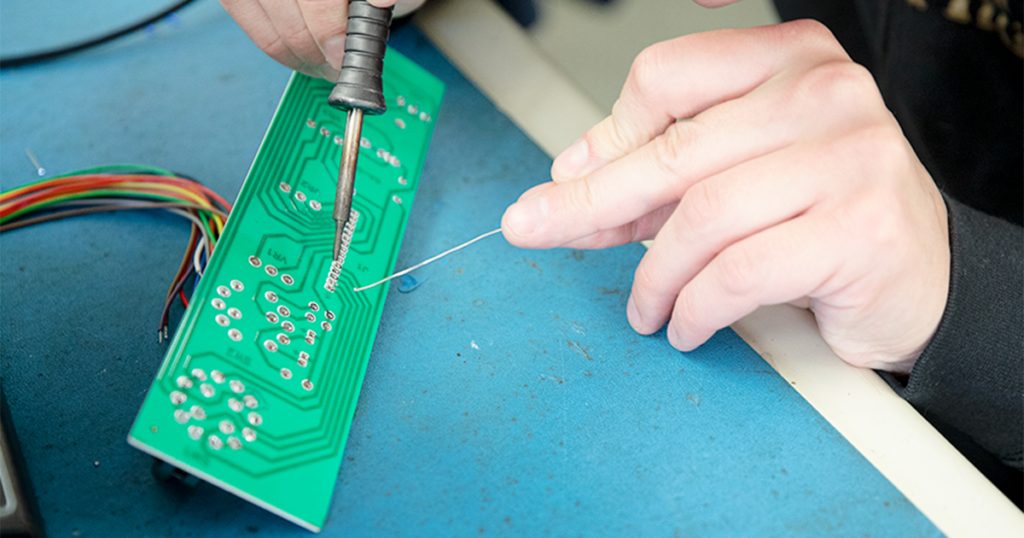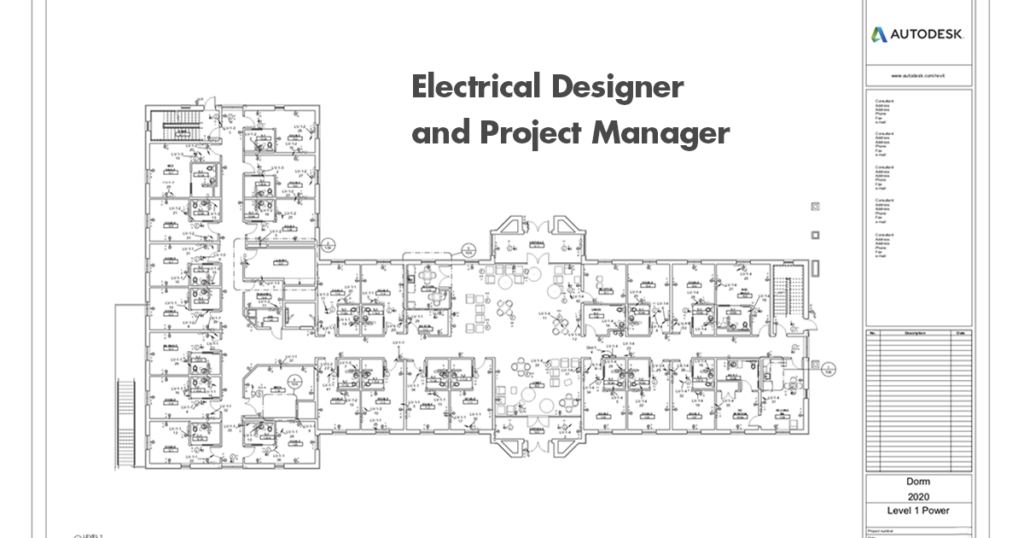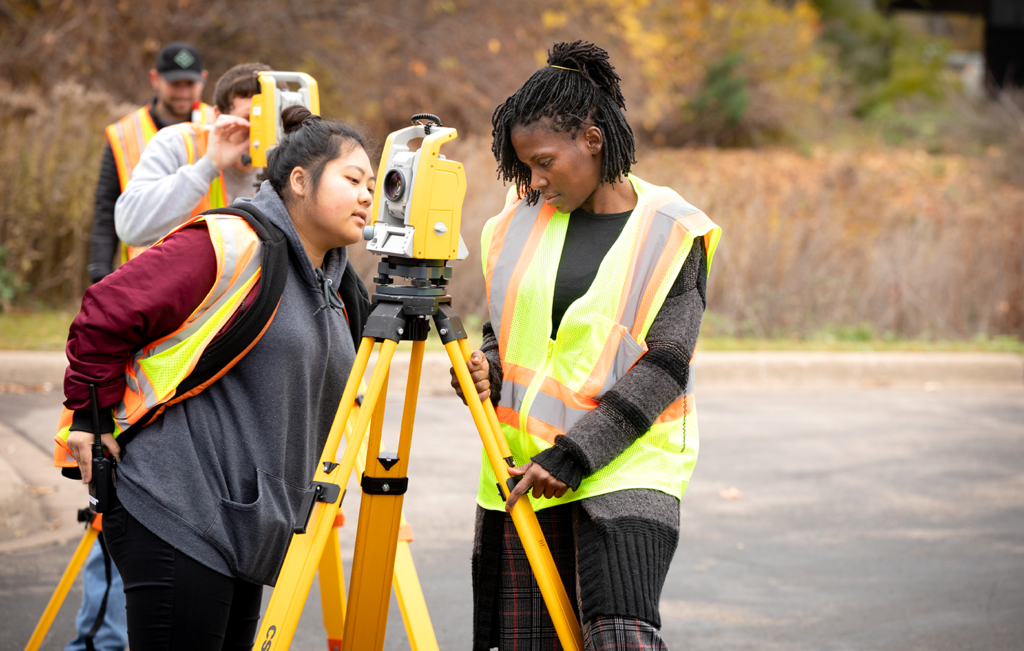Some of the highest-paying, most in-demand jobs are in career fields that most future students have never heard of – let alone considered. Yet these career paths offer great pay and benefits with starting salaries over $60,000, provide opportunities for advancement, and have high job-satisfaction rates for those in the field. So before you go down some of the more common career paths, you might want to see if any of these might just be your dream job.
Five cool careers to consider
1. Electronics Technician

What they do: Electronics Technicians design and troubleshoot anything and everything that operates with an electrical circuit.
Why it’s cool: It’s an area of technology that literally makes our world function. From traffic lights to medical devices, none of it would work without electrical circuits and controllers. It’s a profession that is often on the cutting edge of new technologies, including biomedical devices, microcontrollers, and fabrication equipment.
Where they work: Electronics Technicians are needed in almost every sector of manufacturing; aerospace, medical device and semiconductor manufacturing companies lead the way.
Job Demand: With an average of 39.4 job inquiries per graduate, and a 100 percent placement rate, students in this field of study have their pick of jobs and industries to choose from.
Who it’s for: People who are detail-oriented, who learn by trial and error, and who have an interest in how electronics work, and how to make them work better.
How to get in the field: Technicians are ready to join the field after earning a two-year Associate of Applied Science degree in Electronics Engineering Technology or Electronics Technology (evening option).
2. Electrical Designer and Project Manager

What they do: Electrical Designers and Project Managers are the bridge between the engineers who design complex electrical systems and the electricians who install them. They manage the plans and the people for large-scale building and infrastructure projects.
Why it’s cool: It’s a career that combines the best parts of both construction project management and electrical construction including drafting, design, and estimating, and offers a unique blend of management and field work.
Where they work: People in this field work for electrical contractors, construction companies, and engineering and architecture consulting firms as electrical designers, estimators, and field engineers.
Job Demand: With an average of 36.7 job inquiries per graduate, and a 100 percent placement rate, students in this field of study are in such high demand that they are often working in the field by their second year in the program.
Who it’s for: People who enjoy looking at the big picture and working with both their head and their hands.
How to get in the field: Dunwoody is one of just two colleges in the Midwest that offers a two-year, A.A.S. degree in Electrical Construction Design & Management.
3. Civil Engineering Technician/Land Surveying Technician

What they do: Surveyors map the earth’s surface, create surveying drawings and engineering plans, and help civil engineers design and construct the infrastructure of tomorrow.
Why it’s cool: It’s definitely not a boring desk job. Surveyors often work outdoors in the field, utilizing the latest in GPS and drone technology.
Where they work: Surveyors are employed by a wide range of agencies and companies, including government agencies like MinnDOT, and the City of Minneapolis, to large surveying firms.
Job Demand: At Dunwoody, the surveying programs average 32.7 job inquiries per graduate, with a 100 percent placement rate. And job opportunities are expected to increase by more than 20 percent in the next 10 years.
Who it’s for: People who enjoy working outdoors in the field, want to make a lasting and tangible difference in the world around us, and who would enjoy applying geography and technology skills in the real world.
How to get in the field: Dunwoody offers both a two-year, A.A.S. degree in Surveying & Civil Engineering Technology degree as well as a one year certificate in Land Surveying for those who already have a bachelor’s degree, but want to become a professional, licensed land surveyor.
4. Engineering/Mechanical Designer
What they do: Engineering/product designers use Computer Aided Drafting (CAD) and 3D modeling software, to design, document, and prototype manufactured products.
Why it’s cool: Engineering/product designers bring things to life. This is a career field that blends technology, creativity, and engineering to design and create all types of manufactured products. They take things from concept to creation.
Where they work: If companies design and manufacture something, then they need these types of professionals.
Job Demand: With an average of 26.3 job inquiries per graduate, and a 100 percent placement rate, Engineering Drafting & Design students are in high demand at every type of manufacturing and engineering company across the state.
Who it’s for: Hands-on innovators, who can visualize solutions both on a computer screen, and in the real world.
How to get in the field: With a two-year Associate of Applied Science degree in Engineering Drafting & Design, graduates are ready to launch a career as an Engineering, Mechanical, Tool, or Product designer.
5. Information Security Officer/Analyst (Cybersecurity)
What they do: Information Security Officers work in the world of cybersecurity, monitoring, defending and diagnosing computer systems, networks, and programs.
Why it’s cool: Data and network security is one of the most critical issues facing companies and government agencies today. Cybersecurity professionals work in the world of modern cyber warfare, investigating attacks and intrusions, and mitigating risks and prioritizing IT investments.
Where they work: From Fortune 500 companies to government agencies, Information Security Officers are in high demand to protect and defend critical IT systems and infrastructure.
Job Demand: The demand for cybersecurity professionals is at an all-time high and expected to grow by 24 percent during the next seven years in Minnesota alone.
Who it’s for: People interested in a career as a digital detective, protecting data and company resources. They want to understand not just computer networking systems, but how hackers may gain access to those systems to steal information.
How to get in the field: Professionals with a two-year Computer Networking degree can transfer into a two-year bachelor’s completion degree in Cybersecurity.
These five cool careers are simply the ones we think you might not have heard of. Dunwoody College of Technology offers more than 40 one-, two-, and four-year technical programs that lead to immediate jobs and good careers. Whatever your skill level, interests, or goals, there’s an option for you.
